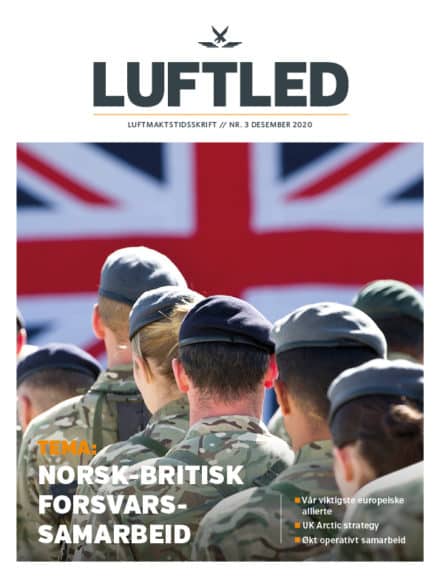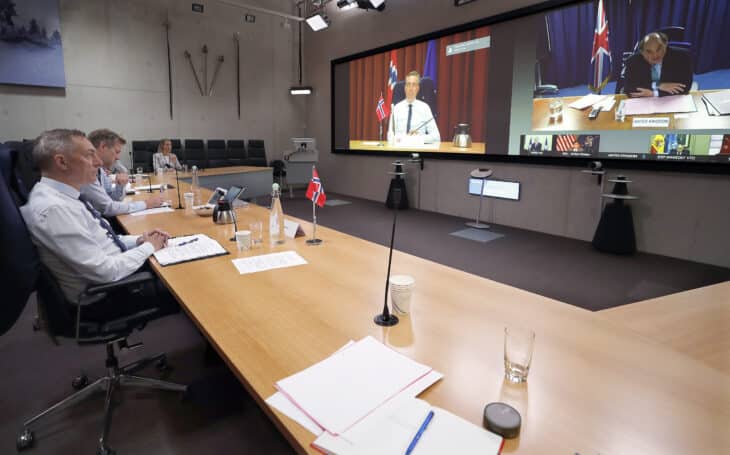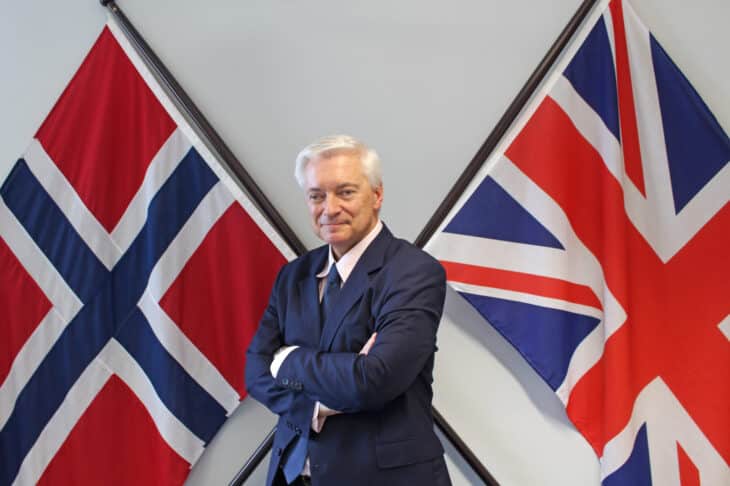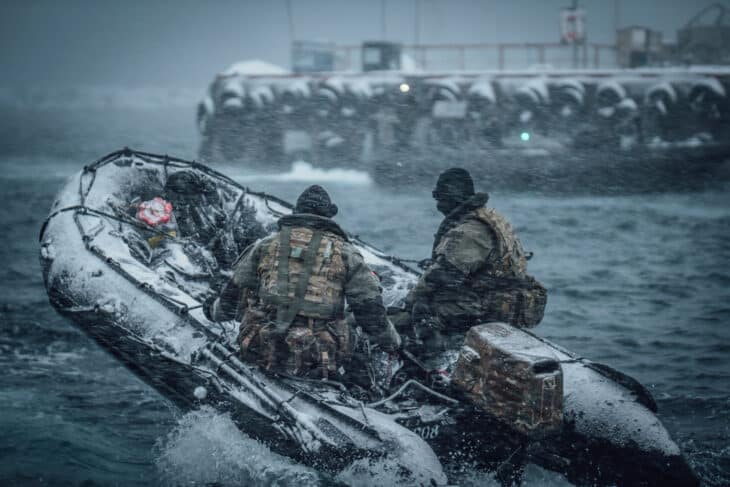The UK Arctic Defence Strategy and Norway
The message from London to potential adversaries is clear: as climate change transforms the Arctic, the UK is ready and able to defend its interests, as well as those of its allies.
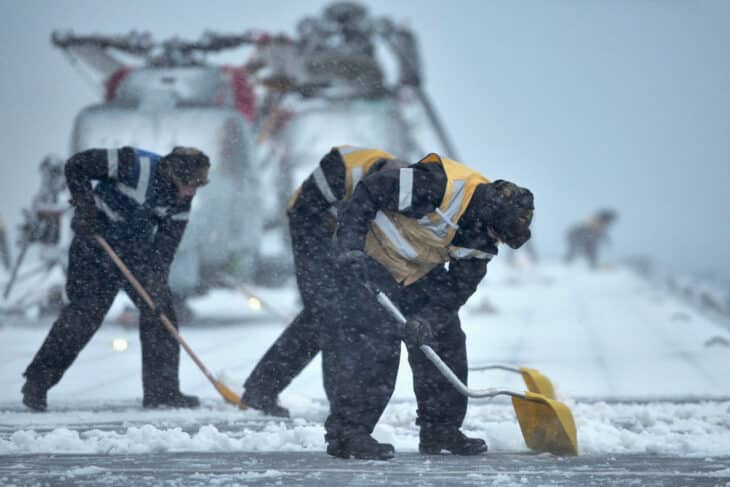
The United Kingdom is not only increasing its military activity in the Arctic, but also pushing its armed forces deeper into the region. This year, the Royal Navy and Royal Air
Force have conducted operations in the Barents Sea, close to Russia’s Arctic Zone.
This activity represents a significant change in London’s posture and awareness regarding the High North. Ten years ago, Dr Liam Fox MP, the then-newly appointed British Secretary of State for Defence (2010-2011) declared:
“We cannot forget that geographically the United Kingdom is a northern European country. Let me be clear, this is not about carving out spheres of influence: this is about working together on mutual interests. For too long, Britain has looked in every direction except its own backyard”.
After nearly a decade of expeditionary campaigns in Iraq and Afghanistan, as well as rising demand for counter-terrorism operations at home, Britain certainly did seem to have forgotten its own neighbourhood. While the UK continued training for ‘Arctic warfare’ in Northern Norway (as it did throughout much of the Cold War), still turned up for large-scale military exercises, like the Norwegian-led Cold Response, and had begun examining future strategic trends in the Arctic, London’s 2010 Strategic Defence and Security Review (SDSR) barely acknowledged, let alone prioritised, emerging strategic interests in the North Atlantic, the Arctic, Scandinavia, or the Baltic (what I and colleagues have termed the ‘Wider North’).
As defence officials in London and Oslo have been keen to emphasise, the UK is now not only training in Norway, but also with Norway
The wider North
Surprisingly, the 2015 SDSR delivered a similar outcome even though British interest in the Arctic and Wider North had clearly grown since the 2010 iteration. The UK published its first ever ‘Arctic Policy Framework’ (APF) in 2013. London was showing greater unease about Russia. The British military presence in the Wider North was expanding. London also signed several agreements with Oslo to enhance defence cooperation, including in the High North. Moreover, the Northern Group of Defence Ministers (NG) and the Joint Expeditionary Force (JEF) – both British initiatives, which have grown to include almost all the Nordic and Baltic countries – were established during this period. The NG (2010) was a forum for Northern European countries to discuss shared security concerns, including in the High North. The JEF (2014) was set up to be a UK-led multinational rapid reaction force, with a stress on interoperability and a strong focus on northeast Europe (although with a view to also being capable of projecting power globally). Meanwhile, British forces participated in two new military exercises in the Wider North: NATO’s Dynamic Mongoose (from 2012) and the Nordic-led air exercise Arctic Challenge (from 2013).
Despite all this activity, London still downplayed its defence interests in the High North and Arctic. The Government’s APF was emblematic of this: in the forty-page document, only one paragraph discussed defence and security. While this may seem surprising, one must recognise that the APF was mainly drafted by the Foreign Office’s Polar Regions Department (PRD). Before 2013, the PRD was reluctant even to produce a detailed paper on British interest in the Arctic, out of concern that the Arctic states might accuse London of overreaching. When, under pressure from Parliament’s Environment Audit Committee and other stakeholders, the PRD acquiesced, officials there were determined to use the APF as an opportunity to highlight and progress Britain’s scientific and economic interests. This also matched London’s understanding of the international context at the time, especially the generally cooperative spirit of international relations in the Arctic. PRD officials therefore aimed to promote a benign image of the UK as a friend to the whole Arctic, including Russia. By skirting around Britain’s emerging defence concerns, London hoped to avoid antagonising the Arctic states (especially Russia). During a particularly perilous period for the Ministry of Defence’s finances, London’s approach also avoided heaping further expectation and demand on the Armed Forces.
However, British involvement in these exercises might also be seen as part of a broader strategy whereby London is pushing back against a range of malign activities by Russia, including the 2018 ‘Salisbury poisonings
Defence in the Arctic
Since the 2015 SDSR, however, the conversation in London has shifted. British defence ministers and military chiefs have discussed, with greater openness, their growing concerns about the Wider North. This was aided in part by the House of Commons Defence Committee inquiries on ‘Defence in the Arctic’, which took place between 2016 and 2018. As that Committee concluded: “although the region [Arctic] is characterised by low tension, it cannot be taken for granted that it will remain this way”. Moreover, the Committee reminded the Government that if Britain is to go on claiming that it is a leading defence nation, able to deploy anywhere in the world, then it must maintain the capability to operate in the Arctic and High North. The Government responded by agreeing to publish a ‘Defence Arctic Strategy’, which would ‘put the Arctic and the High North central to the security of the United Kingdom’. The strategy emphasised four key elements in Britain’s approach: the Royal Marines’ presence in Norway, a standing commitment to support air policing over Iceland, maritime patrol over the North Atlantic and High North, and the regular under-ice submarine deployments.
Over the same period, Britain’s military activity across the Wider North also increased. Initially, the focus was on the Baltics in the aftermath of Russia’s aggressive actions in eastern Ukraine and Crimea. In 2016, the UK agreed to lead NATO’s enhanced forward presence operation in Estonia. A major UK-led JEF exercise (‘Baltic Protector’) in the Baltic Sea followed in May 2019. However, since the announcement of the Defence Arctic Strategy – which was later renamed the ‘UK Defence Contribution in the High North’ – in 2018, there has been a similar uptick in activities in the High North. Notable, amongst these activities, was the decision taken in 2018 to commit the Royal Marines to undertake cold weather training in Norway for the next ten years. This was significant in planning terms. Prior to 2018, neither London or Oslo could ever be completely certain that the Royal Marines would return twelve months later (indeed earlier that year cold weather training was cancelled to claw back money lost when the value of the pound fell after Britain voted to leave the European Union). The 10-year commitment also means that UK and Norwegian forces are better able to plan their training together. As defence officials in London and Oslo have been keen to emphasise, the UK is now not only training in Norway, but also with Norway.
When announcing the Defence Arctic Strategy, Defence Secretary Williamson also highlighted the important role that Britain’s new fleet of P-8A Poseidon maritime patrol aircraft, based out of RAF Lossiemouth in Scotland, would play in the High North. The RAF has so far received four, with a further five due to be delivered by the end of 2021. With Oslo deciding to procure the same aircraft in 2016, British and Norwegian defence officials have, for several years now, been exploring opportunities for sharing logistics and support bases, reducing costs, and increasing operational effectiveness (this cooperation also builds upon the existing air force collaboration established in 2013 for operating F-35s). Together with the United States, which operates P-8s from Keflavik in Iceland, something of a P-8 ‘club’ has coalesced around a shared aim of enhancing maritime security in the North Atlantic and High North.
However, British involvement in these exercises might also be seen as part of a broader strategy whereby London is pushing back against a range of malign activities by Russia, including the 2018 ‘Salisbury poisonings
Defence in the Arctic
Since the 2015 SDSR, however, the conversation in London has shifted. British defence ministers and military chiefs have discussed, with greater openness, their growing concerns about the Wider North. This was aided in part by the House of Commons Defence Committee inquiries on ‘Defence in the Arctic’, which took place between 2016 and 2018. As that Committee concluded: “although the region [Arctic] is characterised by low tension, it cannot be taken for granted that it will remain this way”. Moreover, the Committee reminded the Government that if Britain is to go on claiming that it is a leading defence nation, able to deploy anywhere in the world, then it must maintain the capability to operate in the Arctic and High North. The Government responded by agreeing to publish a ‘Defence Arctic Strategy’, which would ‘put the Arctic and the High North central to the security of the United Kingdom’. The strategy emphasised four key elements in Britain’s approach: the Royal Marines’ presence in Norway, a standing commitment to support air policing over Iceland, maritime patrol over the North Atlantic and High North, and the regular under-ice submarine deployments.
Over the same period, Britain’s military activity across the Wider North also increased. Initially, the focus was on the Baltics in the aftermath of Russia’s aggressive actions in eastern Ukraine and Crimea. In 2016, the UK agreed to lead NATO’s enhanced forward presence operation in Estonia. A major UK-led JEF exercise (‘Baltic Protector’) in the Baltic Sea followed in May 2019. However, since the announcement of the Defence Arctic Strategy – which was later renamed the ‘UK Defence Contribution in the High North’ – in 2018, there has been a similar uptick in activities in the High North. Notable, amongst these activities, was the decision taken in 2018 to commit the Royal Marines to undertake cold weather training in Norway for the next ten years. This was significant in planning terms. Prior to 2018, neither London or Oslo could ever be completely certain that the Royal Marines would return twelve months later (indeed earlier that year cold weather training was cancelled to claw back money lost when the value of the pound fell after Britain voted to leave the European Union). The 10-year commitment also means that UK and Norwegian forces are better able to plan their training together. As defence officials in London and Oslo have been keen to emphasise, the UK is now not only training in Norway, but also with Norway.
When announcing the Defence Arctic Strategy, Defence Secretary Williamson also highlighted the important role that Britain’s new fleet of P-8A Poseidon maritime patrol aircraft, based out of RAF Lossiemouth in Scotland, would play in the High North. The RAF has so far received four, with a further five due to be delivered by the end of 2021. With Oslo deciding to procure the same aircraft in 2016, British and Norwegian defence officials have, for several years now, been exploring opportunities for sharing logistics and support bases, reducing costs, and increasing operational effectiveness (this cooperation also builds upon the existing air force collaboration established in 2013 for operating F-35s). Together with the United States, which operates P-8s from Keflavik in Iceland, something of a P-8 ‘club’ has coalesced around a shared aim of enhancing maritime security in the North Atlantic and High North.
Some experts have even mooted the possibility of deploying the UK’s Queen Elizabethclass aircraft carriers for operations in the High North
Activity in the Barents Sea
Another significant development is the activity that occurred at sea and in the air over the course of 2020. In March, a British Type 23 Frigate (HMS Kent) was part of a combined US and UK task group, which undertook an anti-submarine exercise in the Barents Sea. Another Royal Navy Type 23 (HMS Sutherland) sailed the Barents Sea in September (this time supported by two RAF Typhoons), whilst leading a multinational task group which again included US warships, as well as the Norwegian Fridtjof Nansen-class frigate HNoMS Thor Heyerdahl. The task group was also supported by US, Norwegian and Danish aircraft.
Both exercises were described by the Royal Navy as demonstrative of the UK’s commitment to vital strategic interests in the High North, including the need to uphold freedom of access and navigation in the region. Indeed, as the current Defence Secretary Ben Wallace put it: “[it is] vital to preserve freedom of navigation when melting ice caps are creating new shipping lanes and increasing the risk of states looking to militarize and monopolize international borders”. These exercises occurred against a backdrop of growing concern, amongst the UK and its allies, about Russia’s militarisation of the Arctic and Moscow’s mooted plan to impose restrictions on foreign warships sailing through the Northern Sea Route in contravention of the UN Law of the Sea Convention. More broadly, the exercises suggest that the current British government increasingly sees the Arctic as a space where it can signal its displeasure about Moscow’s behaviour across the Wider North (which has included increased submarine activity and patrols near UK airspace) and deter any further aggression. However, British involvement in these exercises might also be seen as part of a broader strategy whereby London is pushing back against a range of malign activities by Russia, including the 2018 ‘Salisbury poisonings.
U.K’s change of strategy in the Arctic
A decade ago, it would have been difficult to imagine the Ministry of Defence devising an Arctic strategy, let alone envisage British forces operating so near to Russia’s Arctic approaches. Back then, there was still a great deal of scepticism among British defence officials and military personnel that the Arctic would become a geopolitical hotspot. While elements of the British armed forces continued with their annual ‘Arctic warfare’ training and exercises like Cold Response, there was a strong sense within the UK defence community that they did so more to retain core capabilities, enhance interoperability with NATO allies, and offer Norway reassurance that after years of fighting in hot and dusty places, Britain was still a capable ally in the High North. From Oslo’s perspective, with concerns mounting about Russia’s 21st century geopolitical resurgence, convincing key allies like the UK (who Prime Minister Erna Solberg called Norway’s ‘most important ally in Europe’) that the High North mattered was an important part of its broader effort to bring NATO’s attention back to its core task of territorial defence in Europe.
Today, Britain’s enhanced military presence in the High North tells a very different story. When Russia annexed Crimea in 2014, it undoubtedly reshaped thinking about the High North. The shift was reflected by Cold Response: initially designed to test ‘crisis response’, the 2016 iteration was a test of ‘collective defence’. That was followed in 2018 by the massive NATO-led Trident Juncture exercise (which included a High North component), which provided a similar test of Article 5 of the North Atlantic Treaty. Over the same period, defence officials from Norway, the UK and other NATO allies have all demonstrated greater willingness to publicly discuss and challenge Russia’s destabilising activities throughout the Wider North (indeed this has been the case amongst defence officials from other NATO allies and partners as well). More recently, figures such as Tobias Ellwood MP, the chair of the House of Commons Defence Committee, have also expressed their concerns about Chinese activity in the Arctic, although the nature of any threat posed by Beijing remains unclear.
The concern which might be raised in Norway now is that Oslo’s allies are too ‘present’
Norwegian concerns?
Indeed, far from criticising allies for leaving Norway ‘alone’ in the High North, the concern which might be raised in Norway now is that Oslo’s allies are too ‘present’. With British and American forces deploying to the Barents Sea region with greater regularity, some experts are worried how Russia might react. If the region becomes more unstable, Norway’s functioning bilateral relationship with Russia is likely to be tested, impacting a wide range of issues including fisheries, science, search and rescue, and border relations.
For now, though, there remains a firm sense in Oslo that the increased presence of the UK and other allies in the High North is enhancing Norwegian national security, rather than undermining it. Indeed, the Norwegian government has publicly supported this presence on several occasions this year on account that it shores up Norway’s multilateral approach to defence and security. Perhaps of greater concern for Oslo, is how long this British presence will be sustained. It is certainly no secret that the UK is in financial turmoil as it ponders its post-Brexit future. At the same time, no one is yet able to grasp fully the implications of the covid-19 pandemic for defence and security. Amid this, London has embarked on a ‘Integrated Review of Security, Defence, Development and Foreign Policy’, with a view to determining the future focus and shape of the British armed forces. However, financial pressures and political quarrelling mean that it is unclear when and even whether the Integrated Review will be completed. Quite what Britain (or any other country) will be willing to do, let alone able to do, in defence and security terms over the long-term is still an open question.
Nevertheless, it is undoubtably the case that the return of great power competition between NATO and Russia in Europe, together with China’s emergence as a strategic competitor to the West, and Britain’s withdrawal from the EU, has encouraged London to re-evaluate the challenges it faces in its own neighbourhood. This has already led to a material increase in the size of Britain’s military boot print above the Arctic Circle and there is ambition to at the very least sustain this. Some experts have even mooted the possibility of deploying the UK’s Queen Elizabeth-class aircraft carriers for operations in the High North. Therefore, despite the challenges presented by covid-19 and Brexit, it should not come as a surprise to anyone, if the High North, as part of an arc of concern throughout the Wider North concern, becomes a more prominent feature of UK defence strategy in the years ahead.
